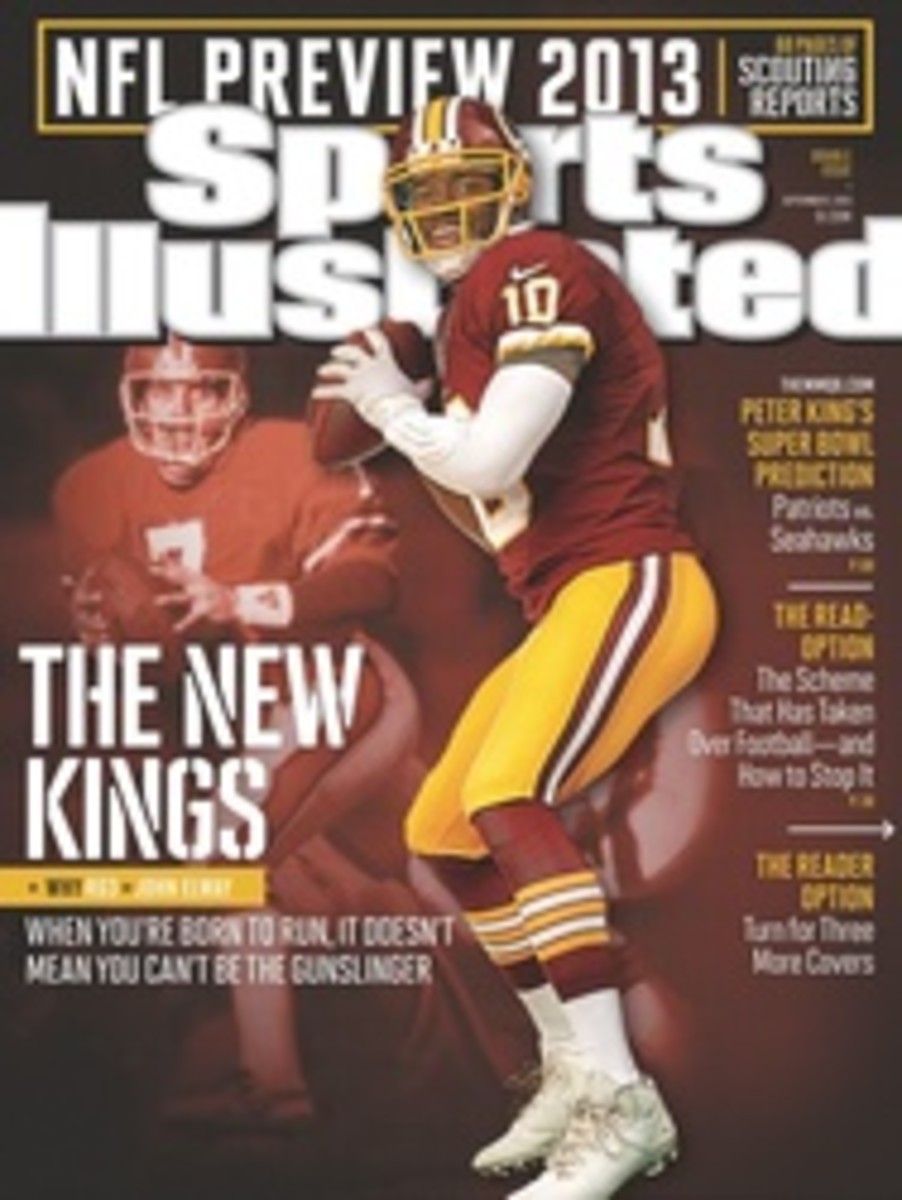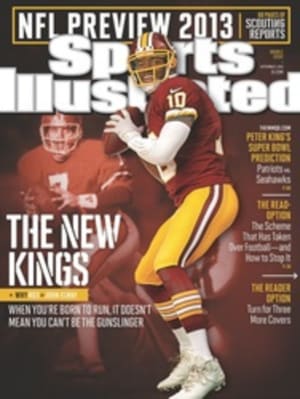
12 Miami DOLPHINS
ON THE first day of Joe Philbin's second training camp with the Dolphins, the tall and lanky coach peered out over a muggy practice field studded with new faces that were brought in to put the Dolphins back in the postseason for the first time in five years. He's "anxious," to use his word, to turn around the NFL's 27th-ranked offense. Consider that during Philbin's previous five-year term as the Packers' offensive coordinator he ran a unit that ranked as high as second and never below ninth in the NFL—success he'd hoped to transfer to South Florida. "Unfortunately," Philbin says, "we haven't had the productivity."
Not yet. But the sample size is small: just one season with a rookie head coach and a rookie quarterback. Those two enter their second year together with a roster that G.M. Jeff Ireland boldly transformed through an off-season spending spree. Love or hate the five-year, $60 million contract doled out to receiver Mike Wallace, Ireland's intention was clear: Surround Ryan Tannehill—the guy drafted to be the franchise quarterback—with the weapons he needs to succeed.
The roster didn't have nearly enough of those weapons last season. Tannehill threw just three TDs to a receiver, and after Brian Hartline and Davone Bess, the next most prolific wideout registered just 11 catches. With no deep threat (which is exactly what Wallace is), the Dolphins had only three pass plays of 40 or more yards, tied for fewest in the league.
This off-season, as Philbin reviewed the tape of the offense, he saw the same scene unfold over and over: Opponents bunched defenders together at the line (sometimes with no safeties deep), cutting off short routes and the run game. "We had holes we needed to fill," says Hartline, referring to a field-stretcher like Wallace. "Getting to three- and four-wide-receiver sets was difficult. That's changed for 2013."
On top of Wallace and Hartline (who's coming off his first 1,000-yard-receiving season), Miami added receiver Brandon Gibson, who'll line up inside. They lost one piece of the puzzle, though—a key intermediate target—when free-agent signee Dustin Keller suffered a season-ending knee injury in the preseason. The challenge now, as Tannehill put it, is "if we have the talent, we have to be able to use it."
The clock is ticking, especially considering that every top target other than Hartline is new. A week before camp opened, Tannehill rounded up teammates for bonus throwing sessions, and throughout August he stayed after practice to repeat missed connections or for extra deep patterns. The greatest pressure will be to validate Wallace's hefty payday, but after the receiver missed early camp time with a groin injury, Tannehill pledged, "There's no need to try to force him the ball. It is going to happen."
Miami's West Coast offense was installed—in the meeting room and on the practice field—four times in the spring and a fifth time during camp. Philbin uses the analogy that the scheme was taught at an algebra 1 level a year ago and is gradually advancing this season toward the trigonometry level that he'd reached with the Packers. Meanwhile, new players have been folded in with care, Philbin's staff charting the catches they made with their previous teams to determine how and where to best use them. "We're further along in our scheme and we have better personnel than we had a year ago," says Philbin. "I'm anxious to see us produce better."
Production will mean moving the ball and scoring more than last season's average of 18 points per game. The Dolphins haven't had a season over .500 since 2008, which was also the last time any team other than the Patriots won the AFC East.
For Miami, the offense had an inauspicious start, fumbling the exchange between Tannehill and running back Lamar Miller on the team's very first offensive play of the preseason. But Hartline, who's been with the Dolphins since 2009, sees the bigger picture, one in which his team now has, on paper, the roster that pulls them closer to the titan of the AFC East. "In order to beat the Patriots, you have to outscore them, and I think we're built for that. We're built to be a similar kind of offense—maybe with a better defense."
THE CASE FOR ...
Cornerback Brent Grimes
Grimes is no stranger to flying under the radar: He played his college ball at D-II Shippensburg (Pa.) University and then had to prove himself overseas with NFL Europa's Hamburg Sea Devils. On a team that was restocked with high-priced free agents this off-season, he's still not a headliner. But the former Falcon may be one of the Dolphins' most important additions. The Miami secondary gave up 60 pass plays of 20 or more yards in 2012 (29th in the NFL) and intercepted just 10 balls (27th). Grimes is returning from a season-ending Achilles tear suffered in Week 1 last year, but if healthy, he can help cure those statistical deficiencies. Having blossomed from an undrafted free agent to a Pro Bowler with Atlanta, he had 11 INTs from 2009 to '10, earning his team's franchise tag in '12. He has already impressed his new team with his competitiveness and decisiveness, as well as his mastery of Miami's defensive schemes, earning a reputation as a football junkie. G.M. Jeff Ireland took a gamble on a 30-year-old corner returning from a serious injury, but if Grimes regains his preinjury form, his one-year, $5.5 million free-agent deal will be a steal.
SINCE YOU'VE BEEN GONE
(N) NEW ACQUISITION
PHOTO
GEORGE BRIDGES/MCT/LANDOV
WR MIKE WALLACE
PHOTO
TOM DIPACE

